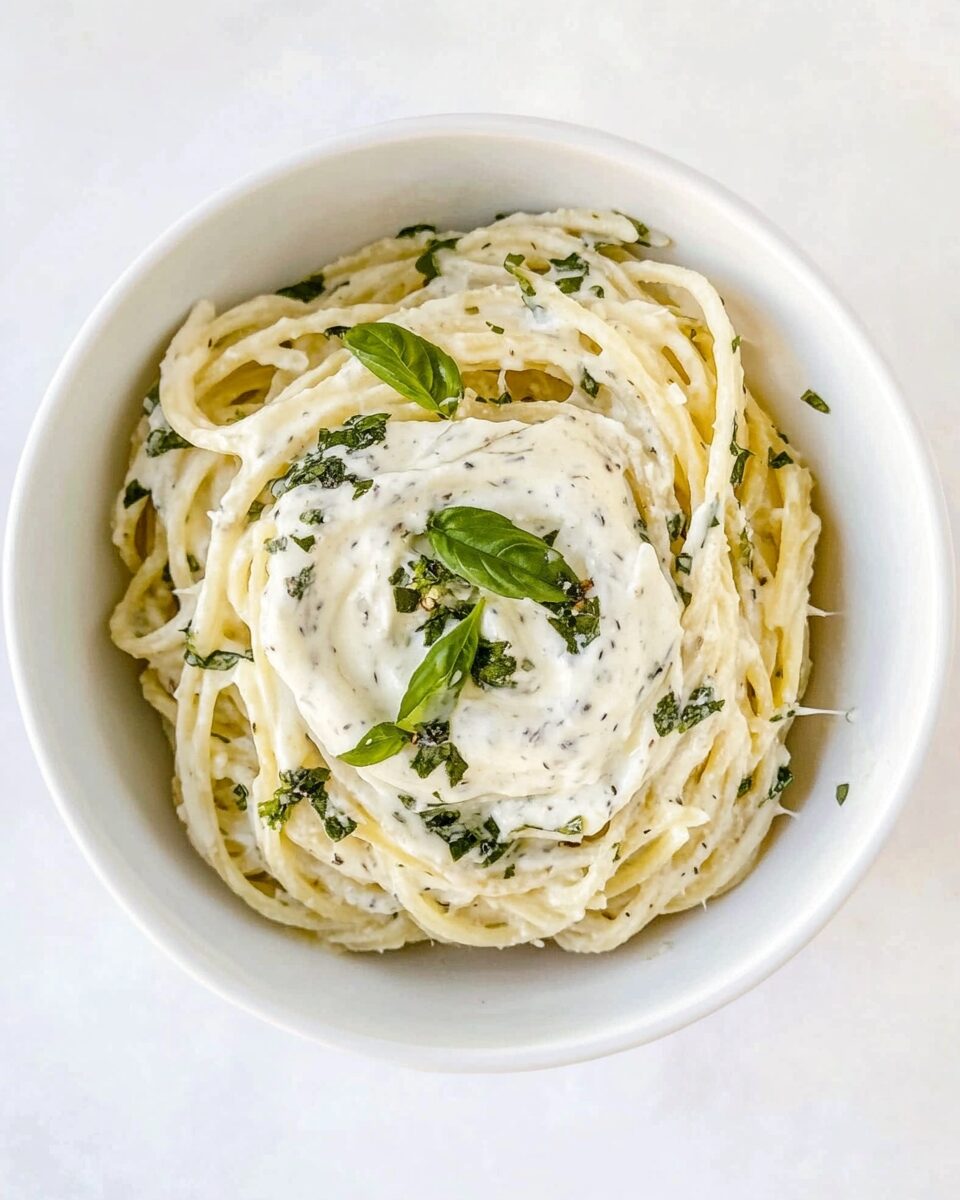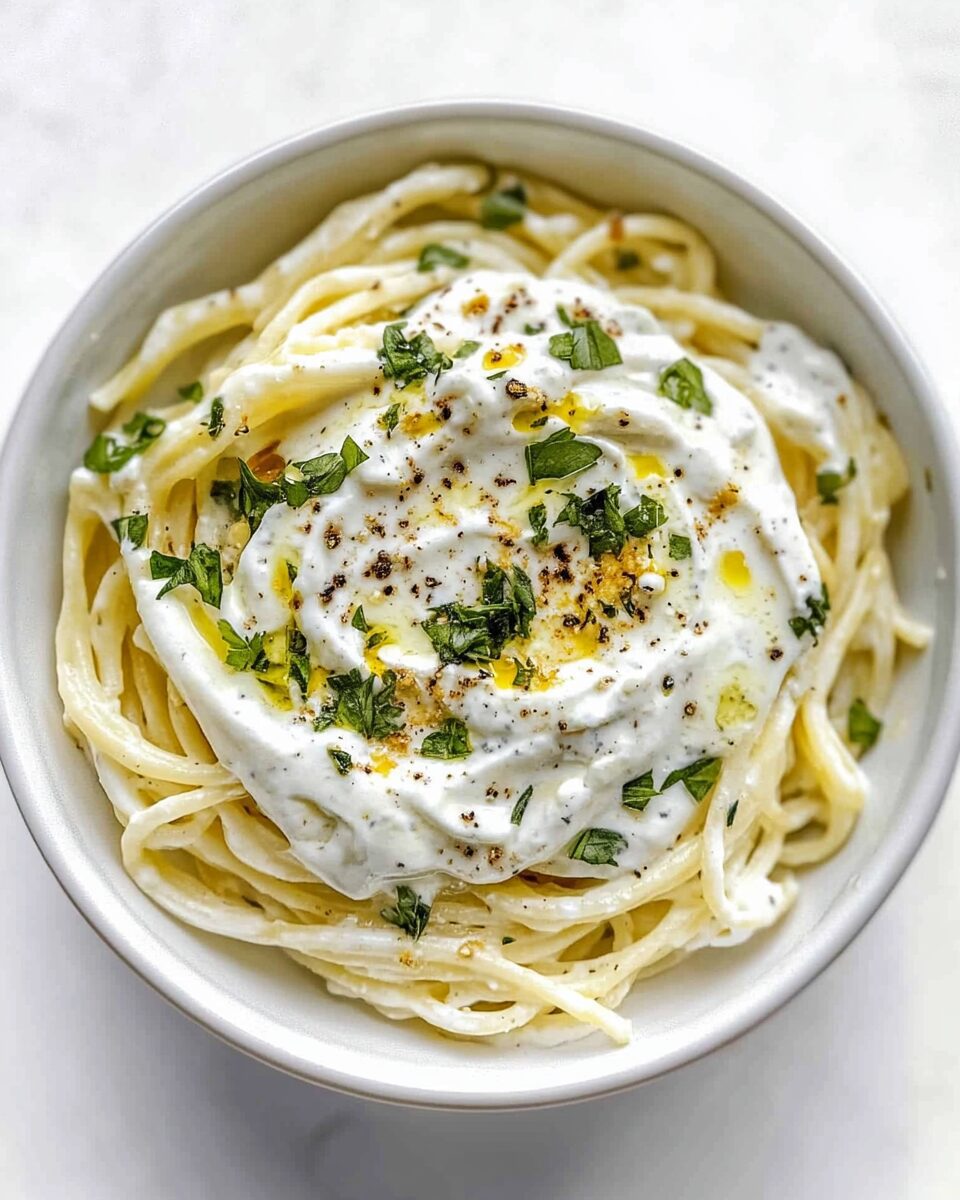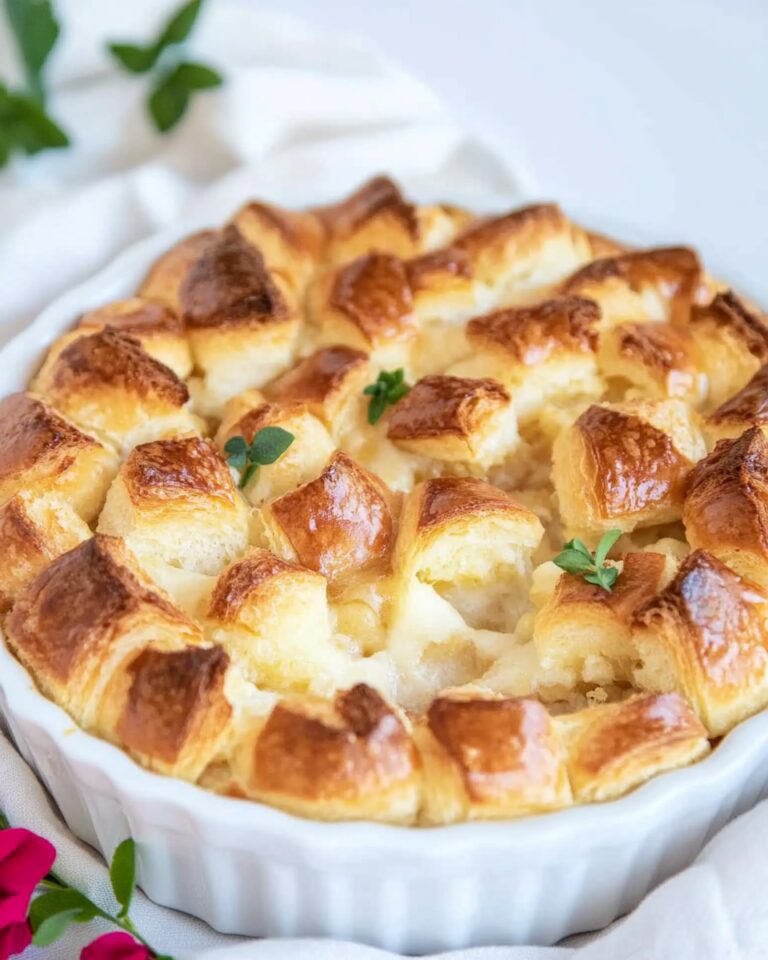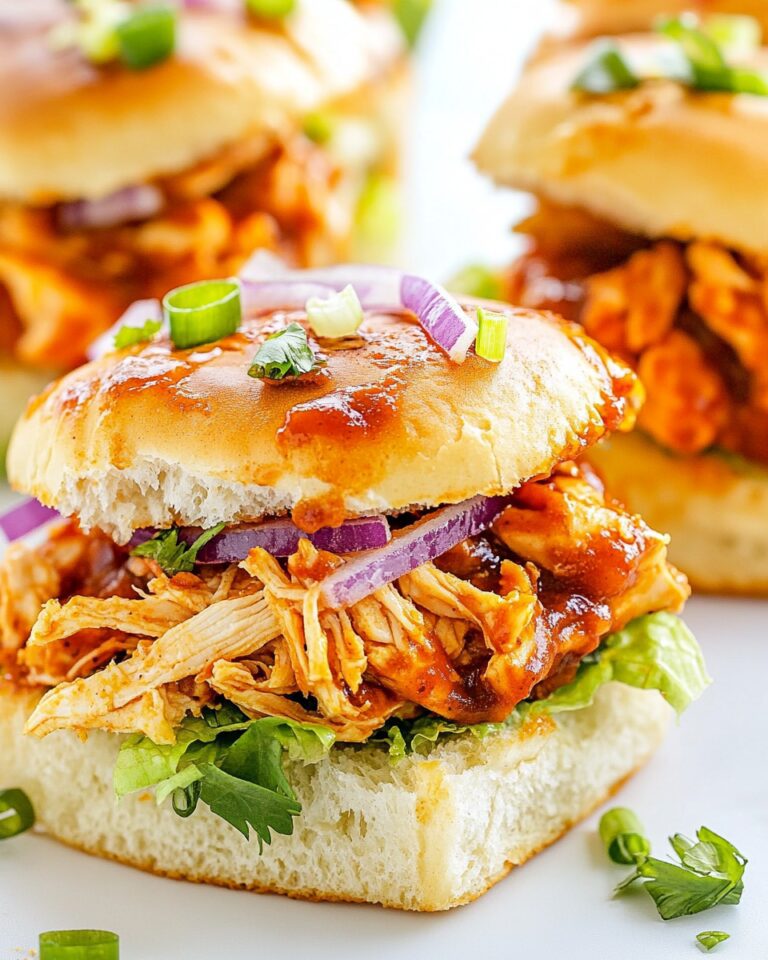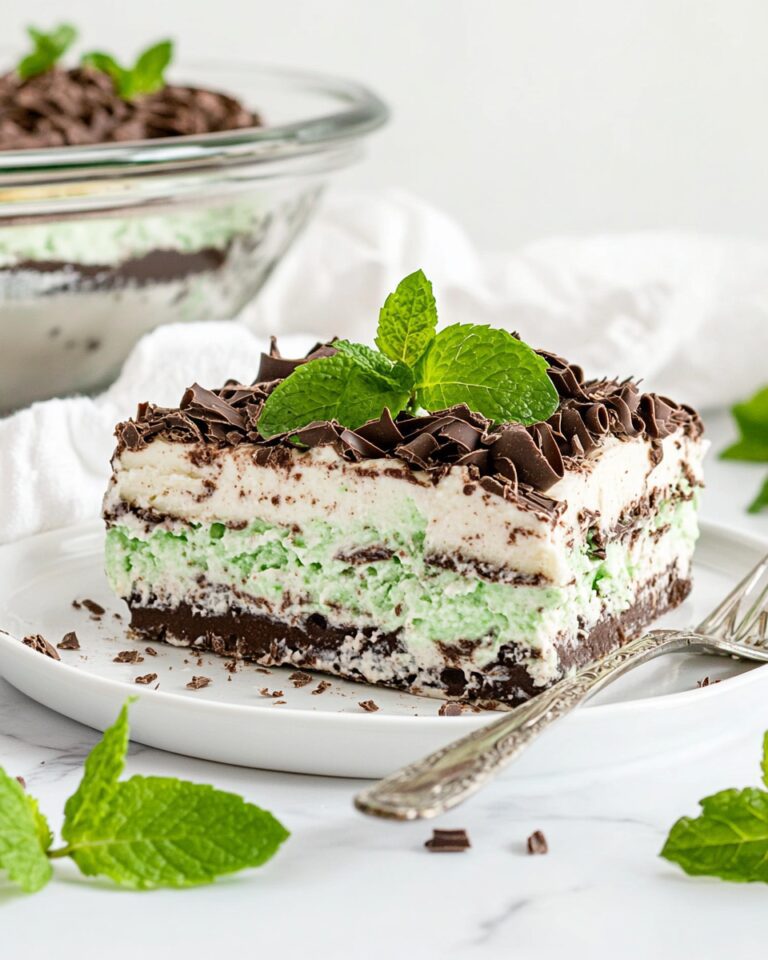Yogurt Pasta Sauce
When it comes to creating a delicious and versatile sauce for your pasta dishes, yogurt pasta sauce offers a unique twist that is both creamy and refreshing. This sauce stands out due to its tangy profile, making it a perfect complement to various pasta shapes and ingredients. Unlike traditional cream-based sauces that can be heavy, yogurt provides a lighter option without sacrificing flavor. Imagine twirling your fork into a bowl of perfectly cooked pasta, generously coated with a creamy sauce that has a hint of zest and a velvety texture. The beauty of yogurt pasta sauce lies in its ability to enhance the taste of your favorite pasta while also allowing for endless customization. Whether you’re whipping it up for a quick weeknight dinner or serving it at a gathering with friends, this sauce is sure to impress. Let’s dive deeper into why yogurt pasta sauce is a must-try and how you can easily make it at home.
Why You’ll Love This Recipe?
Yogurt pasta sauce is not only a delightful addition to your culinary repertoire, but it also boasts several appealing features that make it a go-to recipe for many home cooks. First, the taste is a standout aspect; the tanginess of yogurt adds depth and brightness that elevates the overall flavor profile of your pasta dish. This unique taste can complement a variety of ingredients, from seasonal vegetables to proteins, making it incredibly versatile.
Second, the preparation of yogurt pasta sauce is refreshingly simple. With just a handful of ingredients and minimal cooking time, you can have a gourmet-quality sauce ready in no time. This ease of preparation is perfect for busy weeknights or last-minute gatherings, ensuring that you can serve something delicious without spending hours in the kitchen.
Lastly, the visual appeal of yogurt pasta sauce cannot be overlooked. Its creamy, smooth texture coats pasta beautifully, creating an inviting dish that is as pleasing to the eye as it is to the palate. A sprinkle of herbs or spices on top can elevate the dish even further, making it look as good as it tastes. These aspects combined make yogurt pasta sauce a fantastic choice for anyone looking to enjoy a meal that is both satisfying and enjoyable.
Ingredients:
To create a delicious yogurt pasta sauce, you’ll need the following ingredients, each playing a vital role in developing the sauce’s flavor and texture.
- 1 cup plain yogurt: Use full-fat or Greek yogurt for a creamier texture and richer flavor. The yogurt serves as the base of the sauce, offering a tangy flavor that pairs well with pasta.
- 2 tablespoons olive oil: This adds richness and depth to the sauce while helping to create a smooth consistency. Extra virgin olive oil is recommended for its robust flavor.
- 2 cloves garlic, minced: Fresh garlic adds a fragrant aroma and a kick of flavor. Adjust the amount to suit your taste preferences.
- 1 tablespoon lemon juice: Freshly squeezed lemon juice brightens the sauce and enhances the overall taste with a refreshing zing.
- 1 teaspoon dried oregano: This herb contributes a subtle earthiness and complements the yogurt and garlic perfectly. Feel free to use fresh oregano if available, adjusting the quantity accordingly.
- 1 teaspoon salt: Essential for bringing out the flavors of the other ingredients. Adjust to taste, especially if using salted yogurt.
- 1/2 teaspoon black pepper: Freshly ground black pepper adds a mild heat and complexity to the sauce. You can add more for a spicier kick.
- 1/4 cup grated Parmesan cheese: This is optional but highly recommended for an added layer of flavor and creaminess. It melts beautifully into the sauce.
- Fresh herbs for garnish: Such as parsley or basil, to finish the dish with a pop of color and freshness.
Gathering these ingredients will set you up for a flavorful and satisfying yogurt pasta sauce that can be paired with your favorite pasta.
How To Make Yogurt Pasta Sauce?
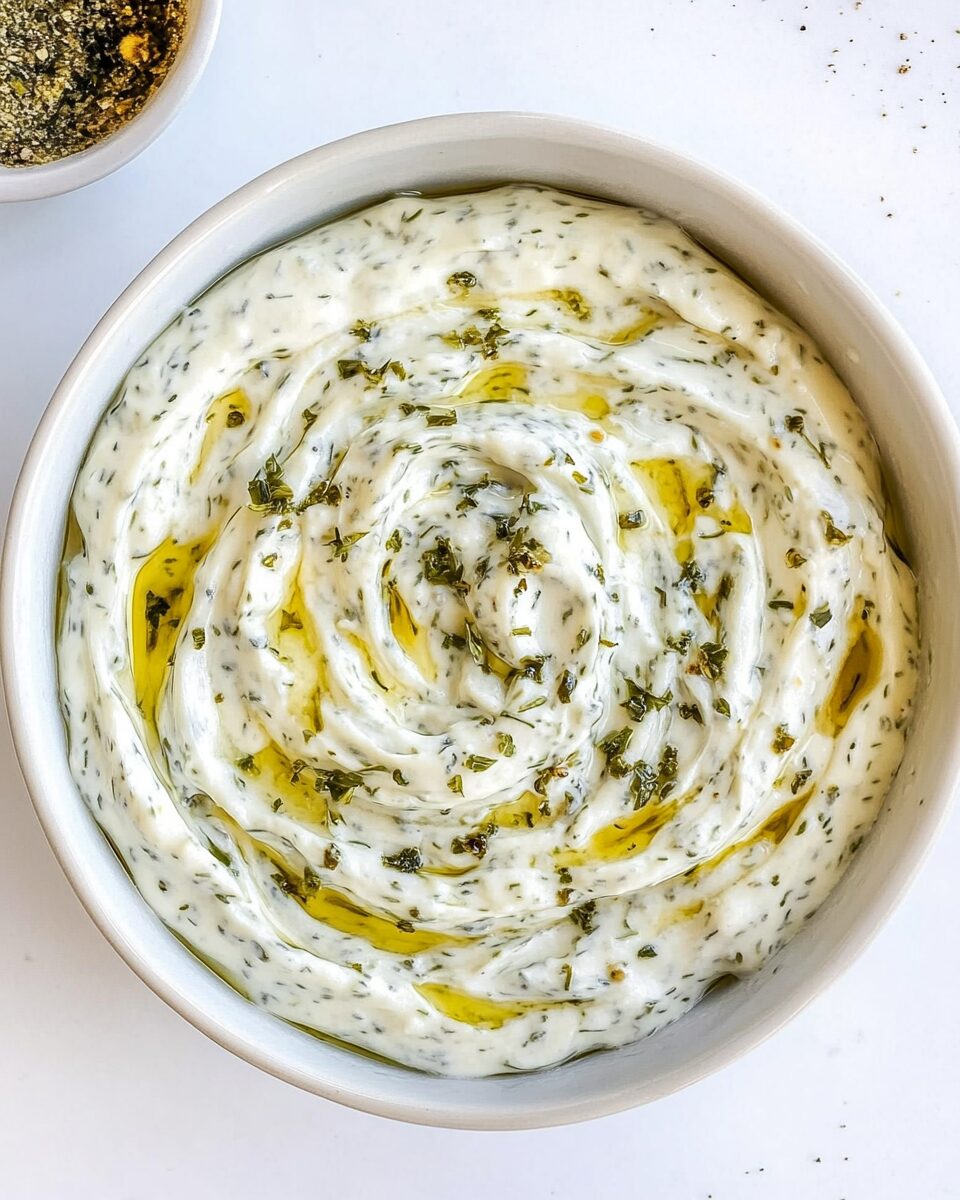
Creating yogurt pasta sauce is a straightforward process that requires minimal effort while delivering maximum flavor. Follow these step-by-step instructions to prepare this delicious sauce:
- Prepare your ingredients: Begin by gathering all your ingredients. Mince the garlic, squeeze the lemon juice, and if using fresh herbs, chop them finely. Having everything ready will streamline the cooking process.
- Heat the olive oil: In a medium saucepan, heat the olive oil over medium heat. Allow it to warm for about a minute, ensuring it’s hot but not smoking. This step is essential for infusing the oil with the flavors of the garlic.
- Sauté the garlic: Add the minced garlic to the hot oil and sauté for about 1-2 minutes until it becomes fragrant and lightly golden. Be careful not to burn the garlic, as it can turn bitter.
- Combine yogurt and seasonings: In a mixing bowl, combine the yogurt, lemon juice, dried oregano, salt, and black pepper. Stir well until the mixture is smooth and all ingredients are evenly incorporated.
- Mix in the sautéed garlic: Once the garlic is sautéed, remove the saucepan from heat and add the garlic and oil mixture to the yogurt mixture. Stir thoroughly to combine, allowing the flavors to meld together.
- Incorporate Parmesan cheese: If you’re using Parmesan cheese, now is the time to add it to the sauce. Stir until well combined. The cheese will add a creaminess to the sauce and enhance its flavor.
- Taste and adjust: Before serving, taste the sauce and adjust the seasoning if necessary. You can add more salt, pepper, or lemon juice according to your preference.
- Serve: The yogurt pasta sauce can be served immediately over your favorite pasta. Toss the cooked pasta in the sauce until well coated, and garnish with fresh herbs for an appealing presentation.
Following these steps will guide you to a creamy, tangy yogurt pasta sauce that pairs beautifully with any pasta dish. Enjoy the process and the delicious results!
Tips For Variations:
One of the best aspects of yogurt pasta sauce is its versatility. You can easily modify the ingredients to suit your taste preferences or to use what you have on hand. Here are some suggestions to customize your sauce:
- Herbs and spices: Experiment with different herbs such as basil, thyme, or dill to create a flavor profile that matches your dish. Adding a pinch of red pepper flakes can provide a spicy kick, while smoked paprika can introduce a smoky depth.
- Vegetable additions: Incorporating sautéed vegetables like spinach, zucchini, or bell peppers can enhance the texture and nutrition of your sauce. Simply sauté the vegetables alongside the garlic for added flavor.
- Protein options: For a heartier meal, consider adding grilled chicken, shrimp, or chickpeas. Cook the protein separately and then mix it into the pasta and sauce for a complete dish.
- Different yogurt types: While plain yogurt is recommended, you can experiment with flavored yogurts or different types of yogurt, such as sheep’s or goat’s milk yogurt, for varied taste experiences.
- Nutty flavor: For an added dimension, consider mixing in a tablespoon of tahini or ground nuts like almonds or cashews. This will give the sauce a richer texture and a unique flavor.
- Cheese variations: If you want to switch things up, try using feta or ricotta cheese instead of Parmesan. These cheeses will provide distinct flavors and textures that can transform your sauce.
- Budget-friendly options: To save on costs, consider making your own yogurt at home or using store brands. Additionally, you can use seasonal vegetables to keep expenses down while maximizing flavor.
These variations allow for creativity and personalization, ensuring that your yogurt pasta sauce can be adapted to suit any occasion or palate. Don’t hesitate to get inventive and discover your perfect combination!
Serving Suggestions:
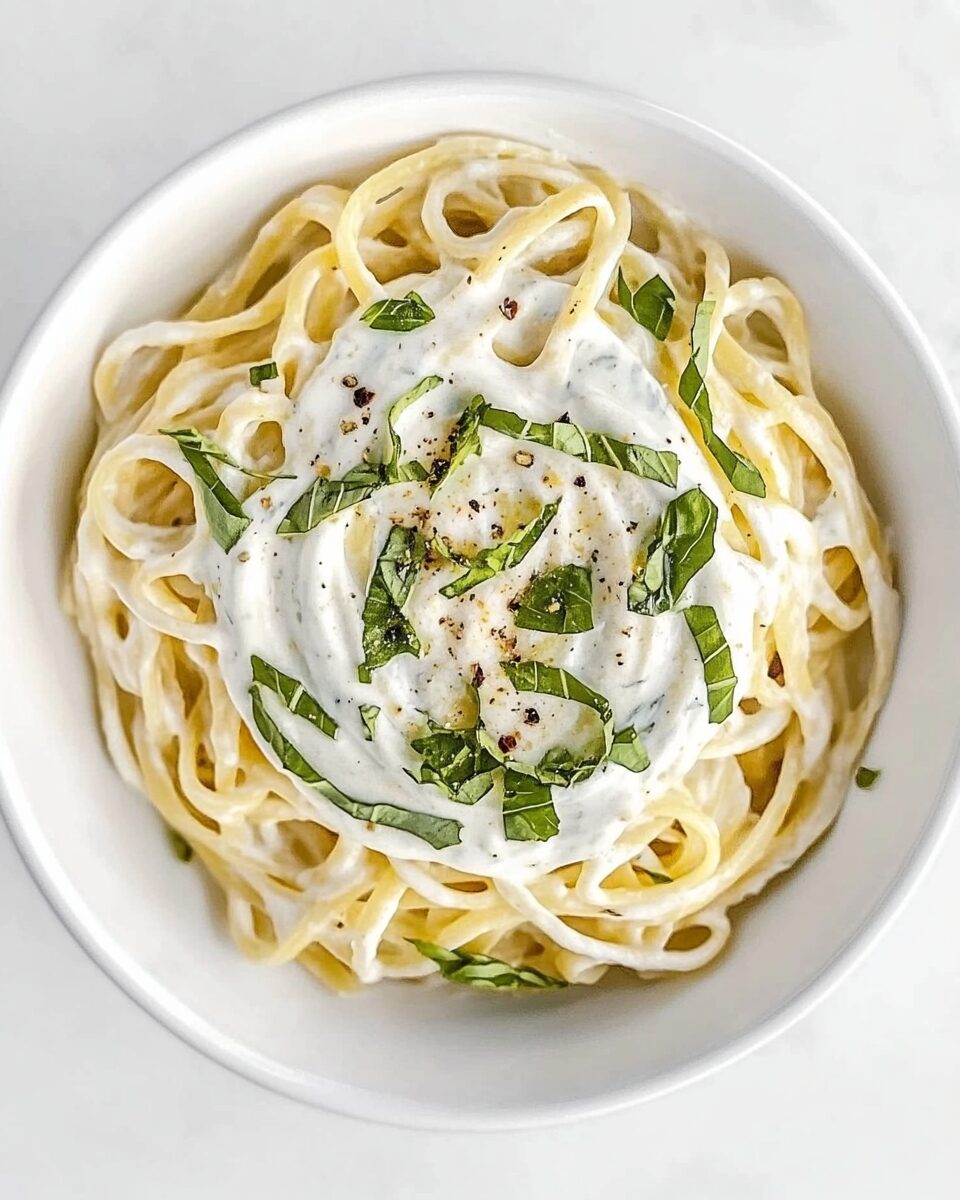
Once your yogurt pasta sauce is ready, the possibilities for serving it are endless. Here are some creative suggestions to make the most out of your dish:
- Pasta Pairings: This sauce pairs beautifully with a variety of pasta types. From classic spaghetti and penne to more unique shapes like farfalle or orecchiette, the creamy sauce will cling beautifully to the pasta, creating a satisfying meal.
- Top with proteins: For a complete meal, consider topping your pasta with grilled chicken, pan-seared shrimp, or roasted vegetables. These additions not only enhance the flavor but also make the dish more filling.
- Garnish wisely: Elevate the presentation by garnishing your dish with freshly chopped herbs, a sprinkle of lemon zest, or an extra dash of cheese. These simple touches can make your dish visually appealing and add an extra layer of flavor.
- Accompanying sides: Serve your yogurt pasta with a side salad for a refreshing contrast. A simple green salad with a light vinaigrette can complement the creaminess of the sauce perfectly. Garlic bread or crusty baguette also makes a great side, perfect for soaking up any leftover sauce.
- Meal prep option: Consider making a larger batch of the yogurt sauce and storing it in the fridge for quick meals throughout the week. It can be easily reheated and served over freshly cooked pasta for a convenient dinner option.
- Picnic or potluck: This yogurt pasta sauce is ideal for gatherings. Prepare a large bowl of pasta coated with the sauce and toss in some roasted vegetables or protein. This makes for a great dish that can be served cold or at room temperature.
These serving suggestions will help you maximize the enjoyment of your yogurt pasta sauce, making it a versatile addition to your meal planning. Whether you are feeding a family or hosting friends, this sauce is sure to impress.
FAQ:
Can I use flavored yogurt for the sauce?
While plain yogurt is recommended for the best flavor balance, you can experiment with flavored yogurts. Just be cautious, as the added flavors may alter the overall taste of the sauce.
How long will the yogurt pasta sauce last in the fridge?
The yogurt pasta sauce can be stored in an airtight container in the fridge for up to three days. Be sure to stir well before serving, as separation may occur.
Can I freeze yogurt pasta sauce?
Freezing yogurt sauces is not generally recommended, as the texture may change upon thawing. However, you can freeze the sauce without the yogurt and add it afterward when reheating.
What types of pasta work best with this sauce?
This yogurt pasta sauce pairs well with various pasta types, including spaghetti, penne, fusilli, or farfalle. Choose your favorite shape for a delightful meal.
Can I make the sauce vegan?
To create a vegan version of the yogurt pasta sauce, substitute dairy yogurt with a plant-based yogurt alternative and omit any cheese. The sauce will still maintain its creamy texture and flavor.

Yogurt Pasta Sauce
Equipment
- Medium Saucepan
- Mixing Bowl
- Knife
- Cutting Board
Ingredients
Ingredients for Yogurt Pasta Sauce
- 1 cup Plain yogurt Use full-fat or Greek yogurt for creaminess.
- 2 tablespoons Olive oil Extra virgin olive oil is recommended.
- 2 cloves Garlic, minced Adjust amount to taste.
- 1 tablespoon Lemon juice Freshly squeezed for best flavor.
- 1 teaspoon Dried oregano Fresh oregano can be used if available.
- 1 teaspoon Salt Adjust to taste.
- 1/2 teaspoon Black pepper Freshly ground for best flavor.
- 1/4 cup Grated Parmesan cheese Optional but recommended for creaminess.
- to taste Fresh herbs for garnish Such as parsley or basil.
Instructions
- Prepare your ingredients: Gather all ingredients, mince the garlic, squeeze the lemon juice, and chop fresh herbs if using.
- Heat the olive oil: In a medium saucepan, heat the olive oil over medium heat for about a minute.
- Sauté the garlic: Add minced garlic to the hot oil and sauté for 1-2 minutes until fragrant and lightly golden.
- Combine yogurt and seasonings: In a mixing bowl, combine yogurt, lemon juice, oregano, salt, and black pepper. Stir until smooth.
- Mix in the sautéed garlic: Remove the saucepan from heat and add the garlic and oil mixture to the yogurt mixture. Stir to combine.
- Incorporate Parmesan cheese: If using, add Parmesan cheese to the sauce and stir until well combined.
- Taste and adjust: Taste the sauce and adjust seasoning if necessary.
- Serve: Toss the cooked pasta in the sauce until well coated and garnish with fresh herbs.

